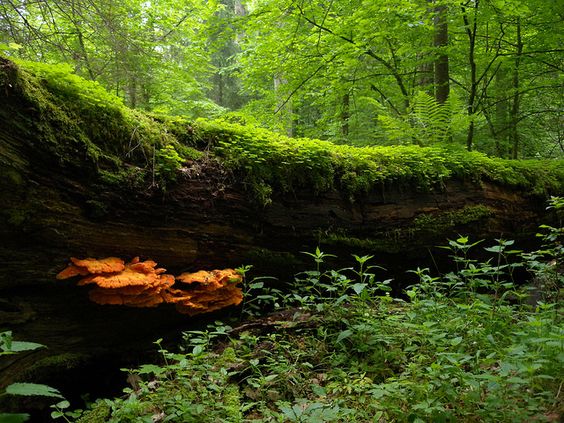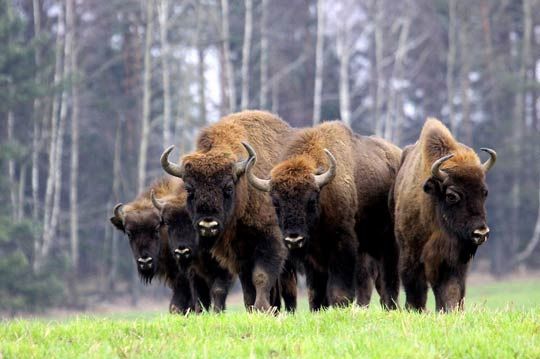The Białowieża Forest is a woodland area straddling the border between Belarus and Poland. It is one of the last and largest remaining parts of the immense primeval forest that once stretched across the European Plain. The forest is home to 800 European bison, the heaviest land animal in Europe. The Man and the Biosphere Programme of UNESCO designated the Polish Biosphere Reserve Białowieża in 1976 and the Belarusian Biosphere Reserve Biełaviežskaja pušča in 1993.
In 2015, the Belarusian Biosphere Reserve occupied an area of 216,200 hectares, subdivided into transition, buffer, and core zones. The forest has been designated a UNESCO World Heritage Site and an EU Natura 2000 Special Area of Conservation. The World Heritage Committee approved the extension of the UNESCO World Heritage site „Belovezhskaya Pushcha/Białowieża Forest, Belarus, Poland” in June 2014, which then became „Białowieża Forest, Belarus, Poland”. It straddles the border between Poland (Podlaskie Voivodeship) and Belarus (Brest and Grodno voblasts), and is 70 kilometers north of Brest, Belarus, and 62 kilometers southeast of Białystok, Poland. The Białowieża Forest World Heritage site covers a total area of 141,885 hectares.


The Białowieża Forest takes its name from the Polish village of Białowieża, which is located in the middle of the forest and was probably one of the first human settlements in the area. Białowieża means „White Tower” in Polish. The name stems from the white wooden hunting-manor established in the village by Władysław II Jagiełło, the Grand Duke of Lithuania and later King of Poland who enjoyed going on hunting trips in the forest, which was then part of the Grand Duchy of Lithuania.
The forest has been a subject of controversy due to logging activities. Environmentalists argue that logging is threatening the flora and fauna in the forest, including species of rare birds. Poland’s state forestry board claims the logging is for protection and for ecological reasons, protecting against the European spruce bark beetle. Large-scale logging started in 2017, and the Polish government has ignored pleas from UNESCO to stop logging the old-growth parts of the forest, as well as a court order of the European Court of Justice to halt the logging activities. The final verdict fell on 17 April 2018, ruling that EU law has been infringed.
All photos taken from pinterest.com
